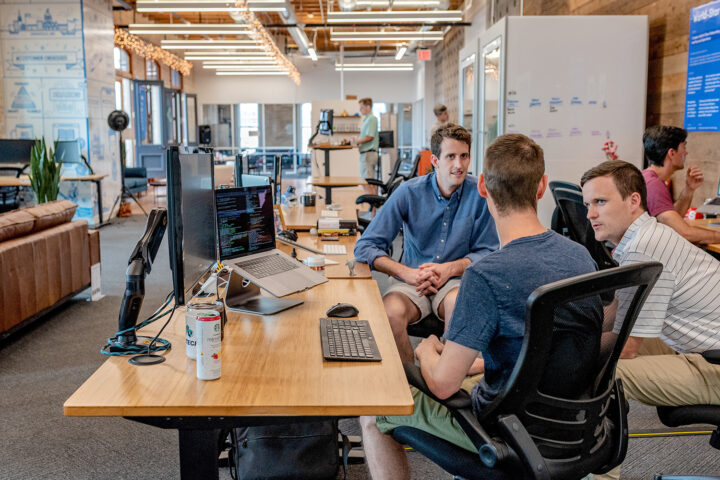The content industry is experiencing disruption due to the proliferation of AI applications doing intelligent and creative human tasks. From summarizing documents to writing poems, creating images, and translating content—AI is seemingly capable of everything. Clickbait articles in the media often talk about AI replacing humans altogether for several different jobs. As a translator, are you worried that machine translation software may replace you one day?
Definitely not!
Contrary to the fear-mongering in media, machine translation supports and helps translators do their jobs more efficiently. You can focus on the more creative aspects of your job while letting AI handle routine tasks. Machine translation is not a competitor but a junior assistant.
This article explores the benefits of machine translation for translators and the opportunities it creates.
Understanding the capabilities of machine translation
Machine translation software has made significant advancements in recent years. Translators must have a clear understanding of capabilities to harness it effectively. For example, machine translation software can:
- Quickly translate large volumes of text.
- Handle multiple languages and language pairs.
- Continuously learn and adapt the tone and style of translated content.
- Use scientific, financial, and legal terminology appropriately when instructed.
- Suggest creative translations for complex ideas and narratives.
However, a human translator is still essential to check and improve linguistic nuances, context-dependent translations, and the intricacies of specialized domains. Human verification of machine-translated content is critical and irreplaceable in certain scenarios—like emergency services, healthcare, and law.
Human translators are absolutely essential to exercise their expertise in areas such as cultural understanding, idiomatic expressions, and complex domains!
How do translators use machine translation?
Many expert translators use machine translation services to improve accuracy, efficiency, and productivity. Let’s look at some real-life case studies to learn how.
More translation in less time
A freelance translator, Sarah starts her day by uploading a large document into machine translation software. The software quickly generates a draft translation, which Sarah reviews and refines through post-editing. By leveraging machine translation, Sarah can complete a significant portion of her day’s work before lunch, allowing her to take on more projects and meet tight deadlines.
Translation for complex domains
Alex specializes in technical translations, often involving complex terminology and industry-specific jargon. Alex leverages machine translation as a resource for terminology research and initial translation drafts. He carefully selects and refines the machine-generated translations to align with the specific requirements of the technical domain. This approach allows Alex to produce accurate and consistent translations while reducing the time spent on repetitive technical terms.
Real-time adaptive translation
Lisa, an experienced legal translator, uses adaptive machine translation as she works. She trains the system with legal texts and collaborative feedback. With each correction, the system improves accuracy. Lisa reduces repetitive work, achieving consistent terminology while preserving legal nuances.
Creative translation
An e-book translator, Maria uses machine translation suggestions for more creative output. The suggestions help her craft translations that resonate deeply with her audience without having to look up a thesaurus constantly. She delivers unique and captivating translations across various domains.
You, too, can use machine translation to handle complex projects, expand language capabilities, and meet demanding deadlines!
Machine traslation tips and tricks for translators
As a new-age translator, you must first learn machine translation post-editing (MTPE). It is the process of taking the machine-generated first draft and refining it for your audience. Here are a few tips to enhance the post-editing process.
Study the machine translation software
It is important to familiarize yourself with the specific machine translation system you are working with and identify its strengths and stylistic tendencies. That way, you can fine-tune the machine-generated translations faster to meet the expectations of your intended audience.
Review for context
Review the source text thoroughly before starting the post-editing process. Understanding the purpose and intended meaning of the original text helps you evaluate the accuracy and adequacy of machine-generated translation.
Edit objectively
While it can be tempting to dismiss machine translations outright, approach the editing process objectively. Evaluate the machine-generated translation based on its merits and correct errors without bias.
Adapt to the target audience
Consider the preferences and expectations of the target audience while post-editing. Adjust the style and tone to align with the target language and cultural nuances. Don’t forget to inject human touch and creativity as you translate.
Improve content clarity
Focus on higher-level improvements instead of making minute word-level changes. Sometimes, machine translation systems split or merge sentences incorrectly, leading to awkward or nonsensical translations. Clarify ambiguous or unclear sentences by improving grammar and syntax.
Perform quality control
Ensure that the post-edited translation undergoes quality control checks. Proofread the final version to catch any lingering errors or inconsistencies. Check that the translation meets the required accuracy, clarity, and style standards.
Final words
Machine translation technology is here to stay! Instead of denying the technology, translators should embrace it and leverage it to improve productivity. You can use it for suggestions as you work or to generate first drafts that you can improve and refine. Top translators integrate machine translation into their workflow strategically, enhancing the quality of translations with their unique skills and human creativity!






